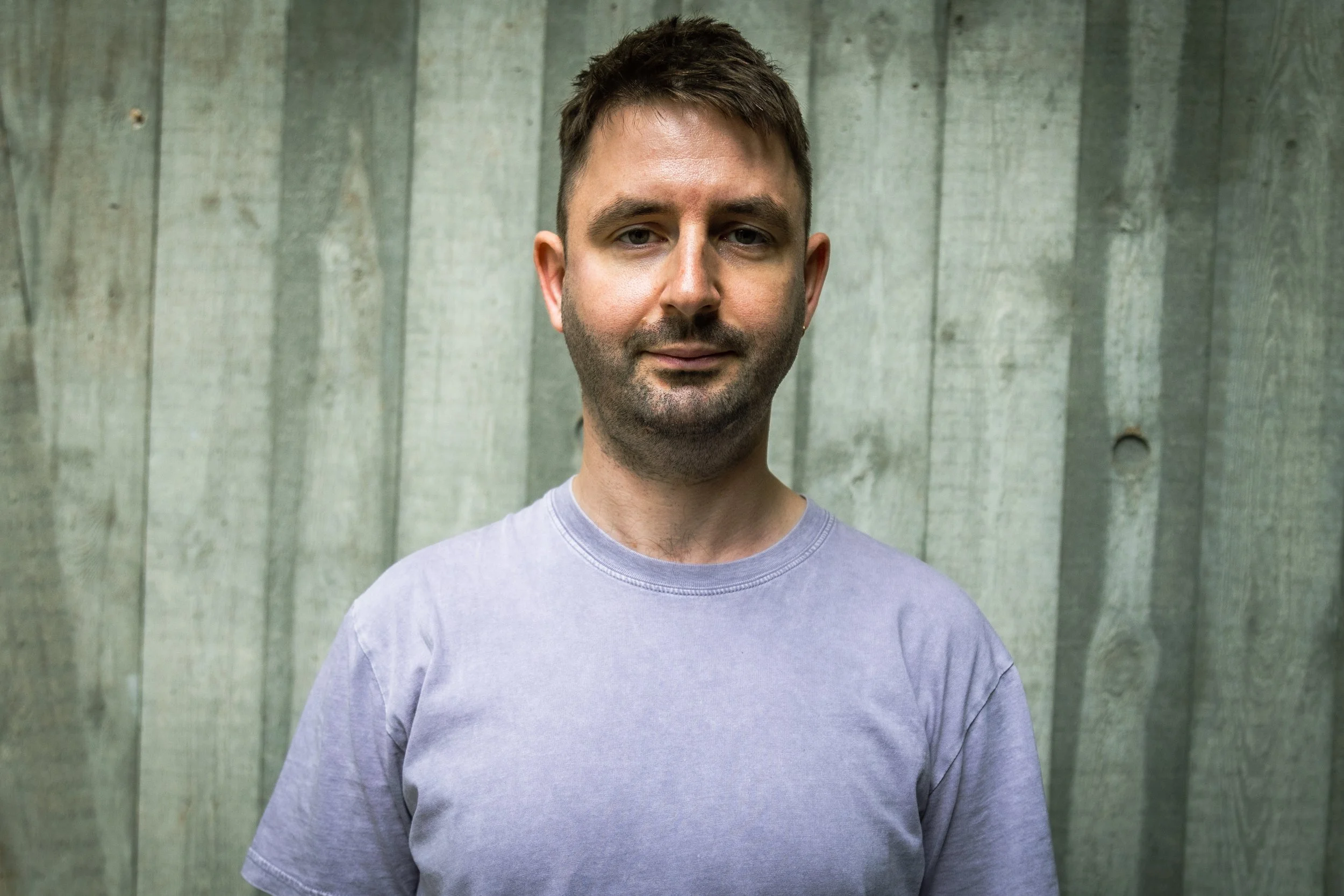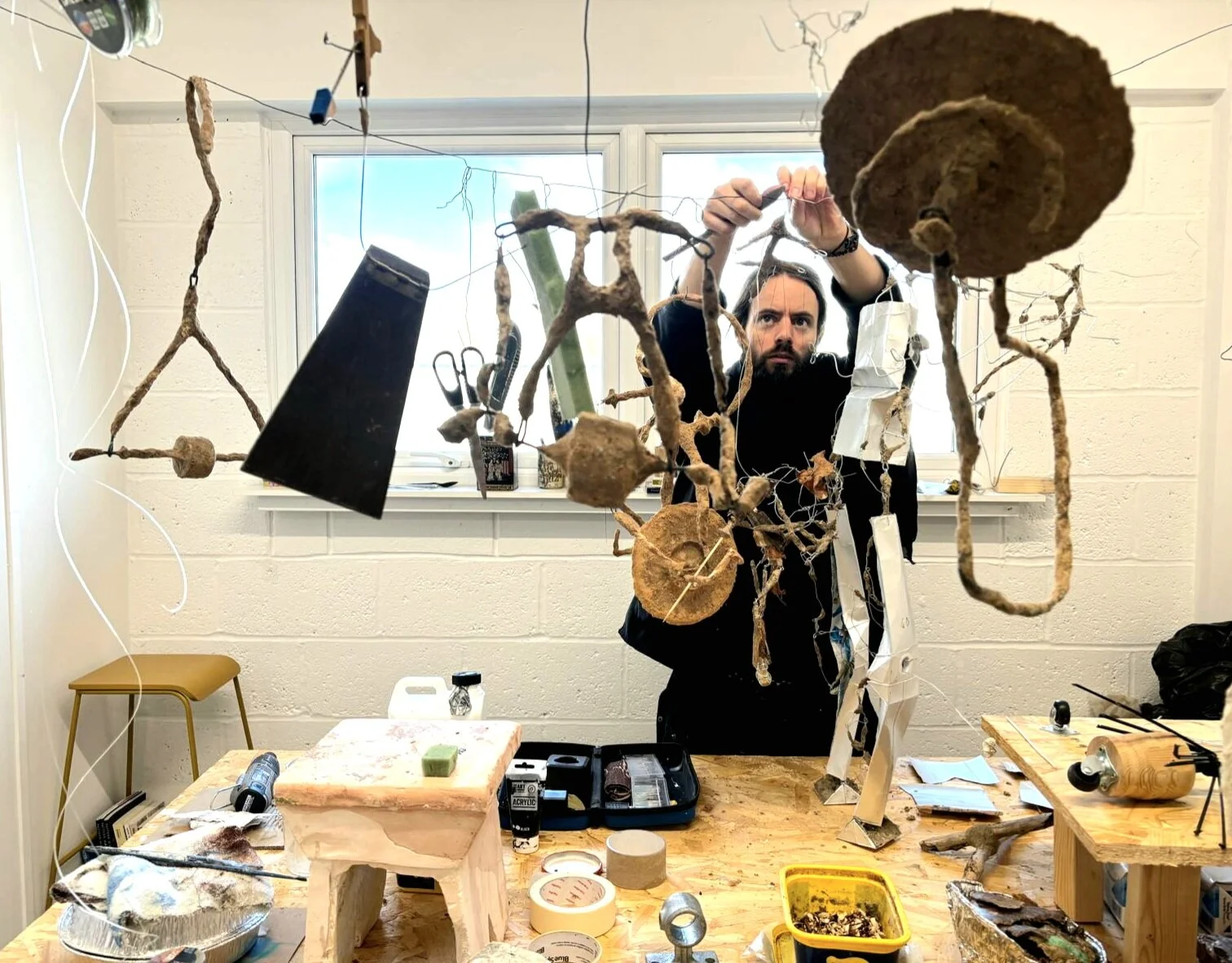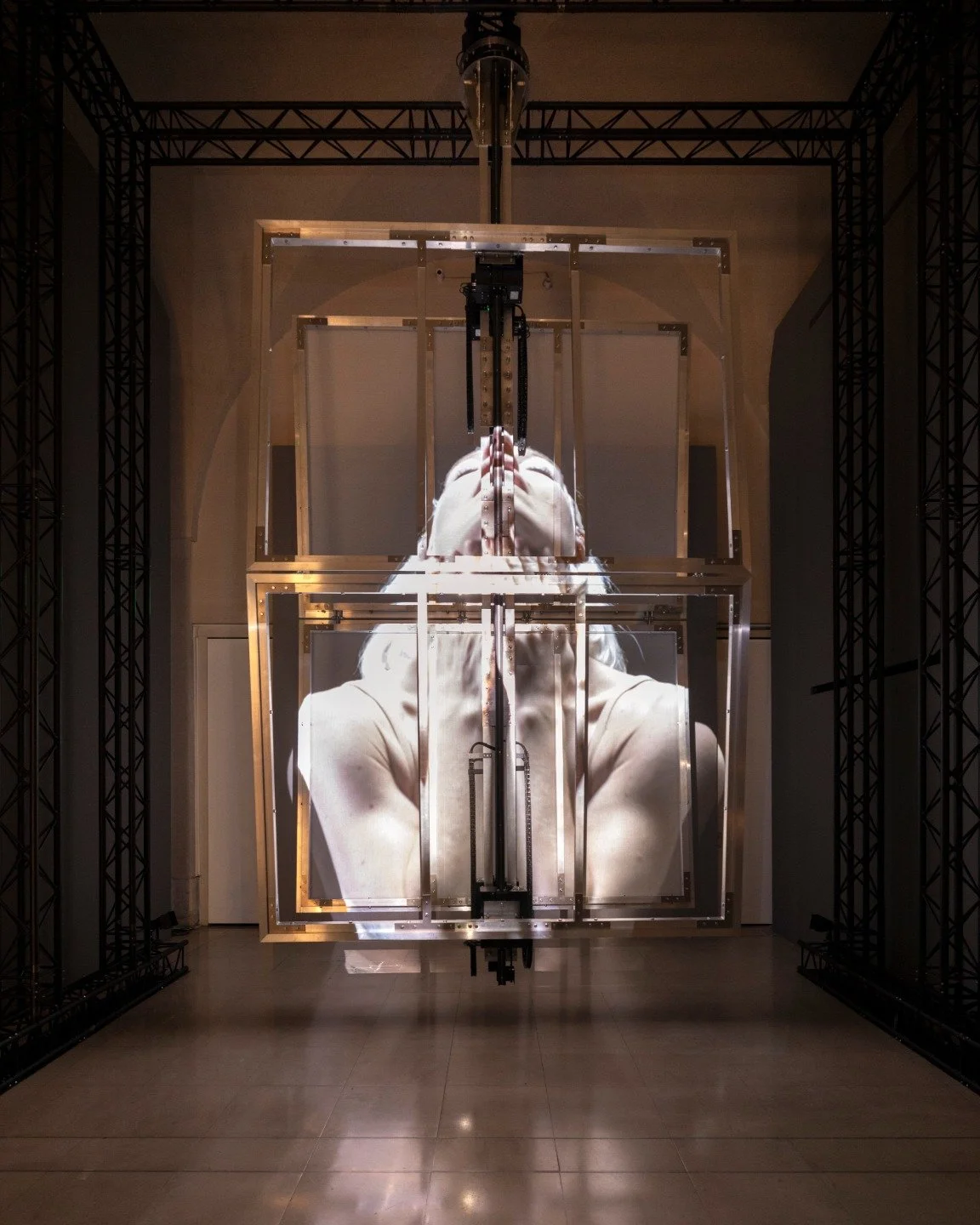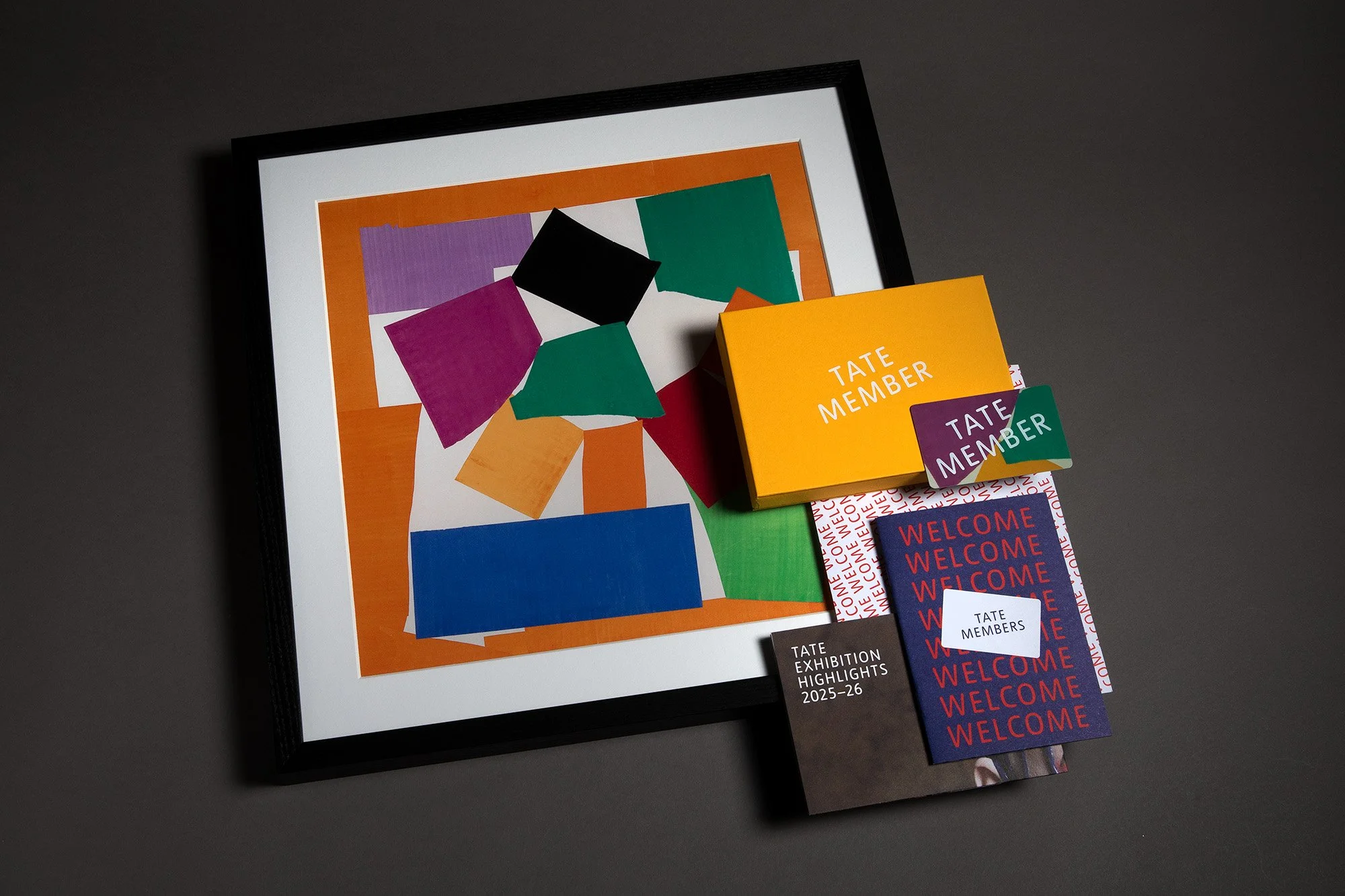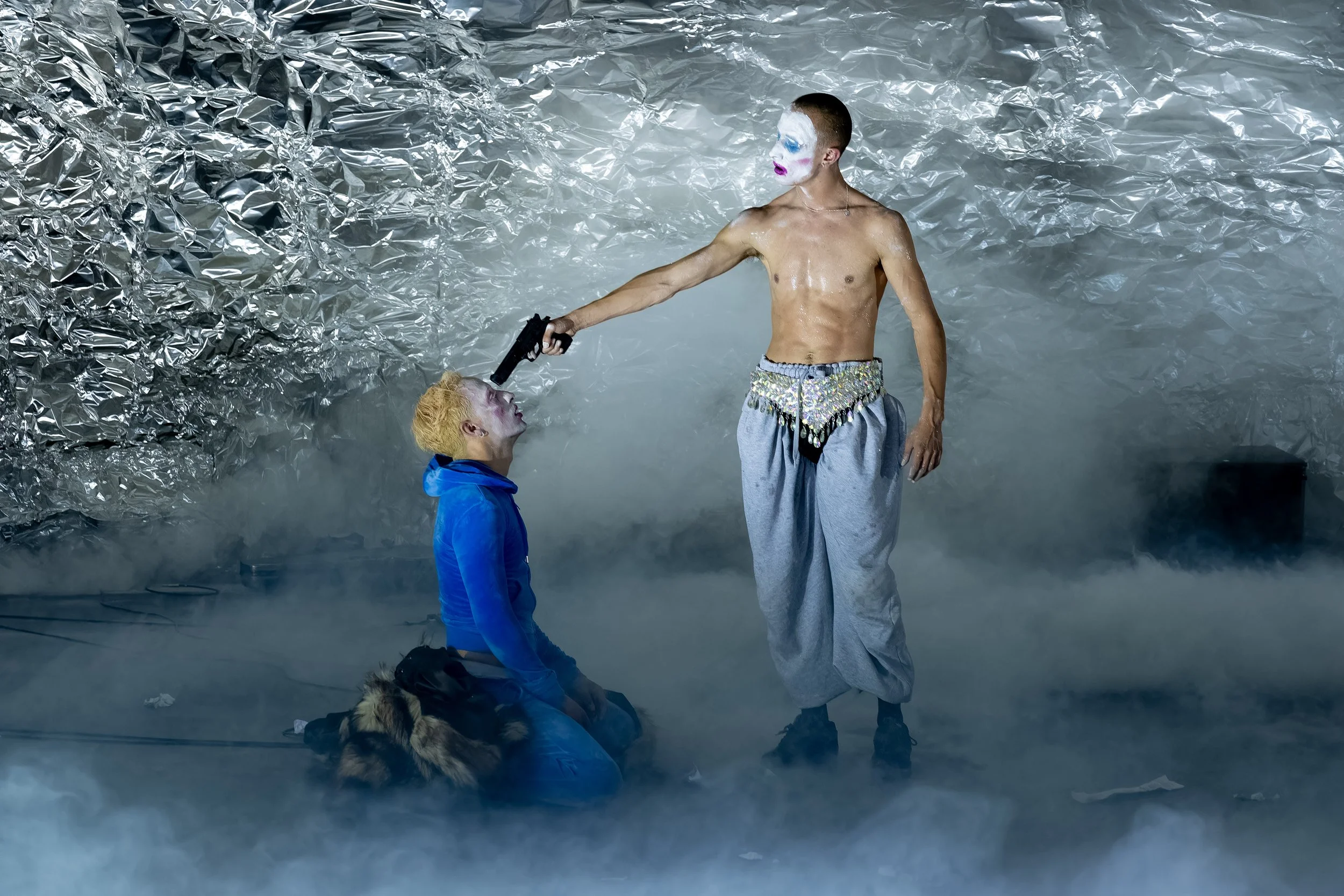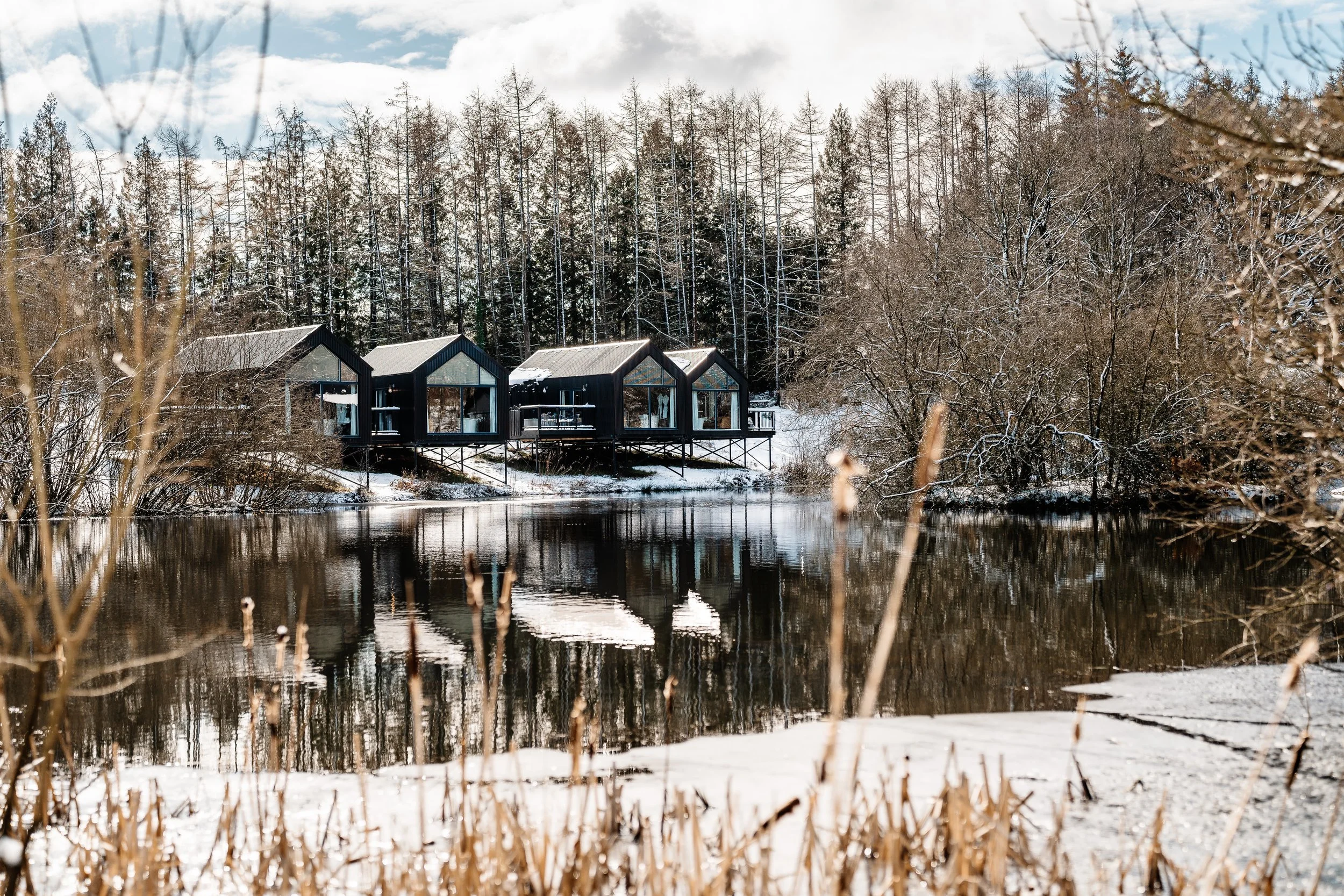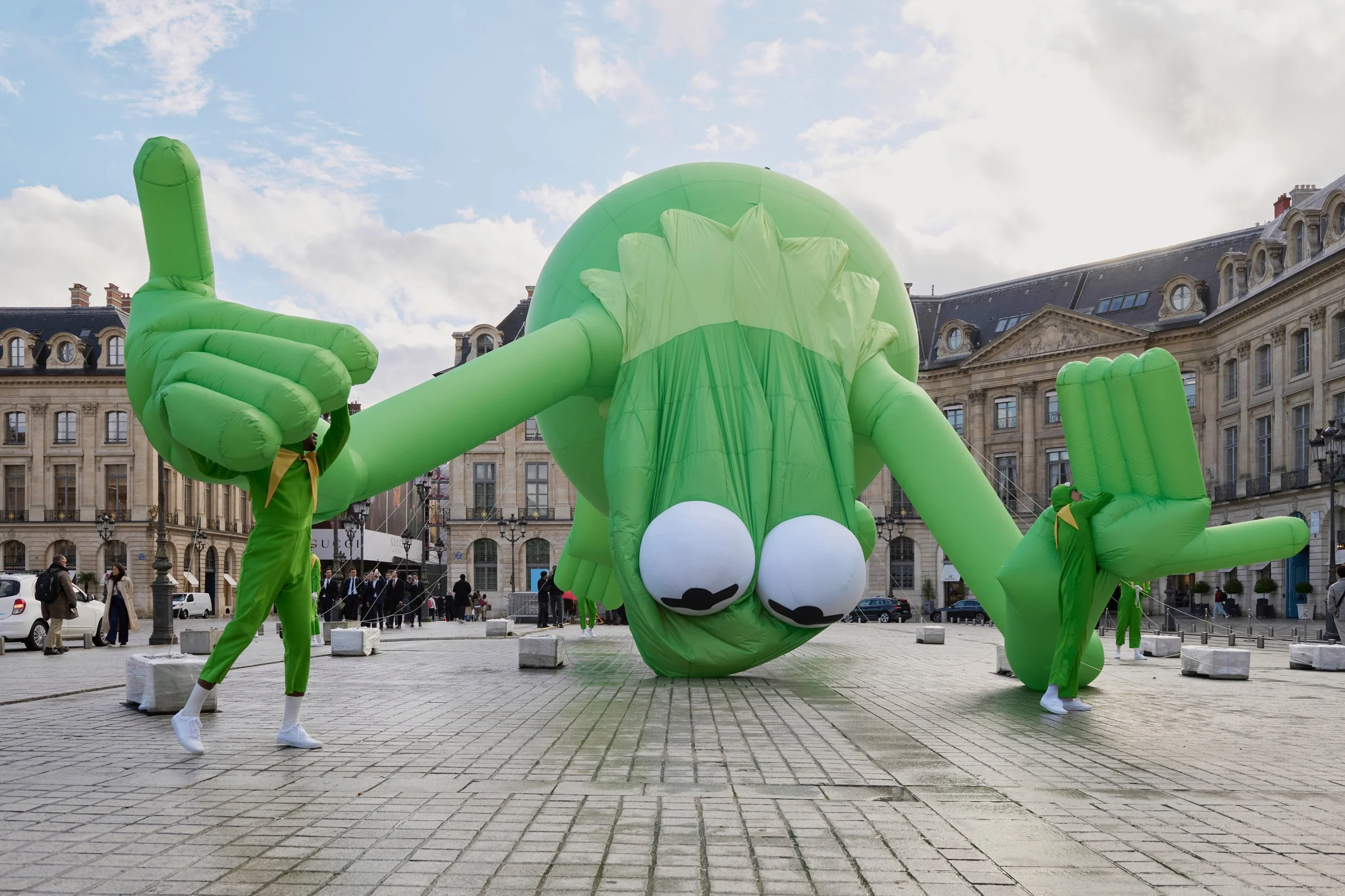In conversation with Hannah Regel
“The book is so much about doubt, self-identity, and how you perceive yourself…”
- Hannah Regel

Hannah Regel
Poet and novelist Hannah Regel’s debut novel, The Last Sane Woman, is a compelling exploration of the emotional lives of two aspiring artists living at different times, yet connected by the discovery of a box of letters in a forgotten feminist archive. It is an assured study of friendship, success, envy, and what it means to be an artist.
FLO contributor Ellen Hodgetts sat down with Hannah to find out more about her creative process and some of the influences behind the novel.
This is your debut novel after writing two poetry collections (When I was Alive and Oliver Reed).How did this change the way you approached the work?
It happened quite naturally. Initially it was more poetic and experimental in its form, I worked on it very slowly and it just grew and grew. As I spent more time on it, it started to become more novelistic in terms of the character development and plot but that was almost an accident. It started off as unconnected fragments and it slowly got knitted together.
What led you to focus on ceramics as the main form of art in the novel?
Aside from how rich ceramics and pottery can be metaphorically – clay comes from the earth and it has to undergo this process with the hands and then it’s fired to become permanent – if you’re thinking about history and archives as well it lends itself quite happily to that. The book is so much about doubt, self-identity, and how you perceive yourself, and I think you’d be hard pressed to find another art form whose status is so contested in terms of whether it’s fine art or functional.
You also have a background in art. How did your own experiences feed into the characters and world you created?
I went to art school, so I’ve made pots, but I was already writing at the same time. I never tried to make a career as an artist. I have worked with clay in the past, but I think that to an extent all art forms have the same set of struggles.
When I was describing some of the emotions Donna goes through it’s completely the same with writing. You have to sit there and generate it from inside of you, it doesn’t come from anywhere else – you have to be bizarrely overconfident and at the same time it’s very humbling.
The perspective shifts between Nicola, Donna and Susan and becomes more fragmented throughout the novel. I’ve seen it compared to Virginia Woolf - were there any particular literary influences that shaped The Last Sane Woman?
I’m thrilled with the Virginia Wolf comparison, I love her a lot. When I was writing The Last Sane Woman, I read a book called Meridian by Alice Walker- it doesn’t seem to be very well known but it’s brilliant, I can’t understand how more people haven’t read it!
It’s about the civil rights movement and it tracks one woman’s life from childhood to death, but it toes the line of incorporating the world of dreams and fantasy into reality really well. Anyone who does that – so Denis Johnson for example – is a big influence. It’s the same in Virginia Woolf’s writing, the world of dreams and fantasies blends into realities.
One difference between Nicola and Donna is that Nicola exists in the online world too. How do you think social media has impacted artists and creators?
I suppose something similar will always have existed in some kind of warped capacity, even before the social media age. But now it feels like you’re on show a bit more, or there’s a pressure to opt into the cult of the personality that runs alongside it. I’m quite a private person, I find it quite frightening – but I also feel myself compelled to do it.
You referred to Nicola as experiencing a ‘crisis of desire’ – could you explain a bit more about what you mean by this and how desire fits into the narrative of the book?
When we meet Nicola at the start of the novel, she doesn’t know what it is she wants. She has an idea of it but she’s so easily influenced by outside forces. Her desires and impulses are in crisis. She talks about wanting to be an artist, but doesn’t really seem to be that invested it in and doesn’t do it either. Then as the book goes along she ends up having this sort of Katy Hessel idea of herself that is also never really realised. She’s quite impressionable, and this element of her personality drives the narrative of the novel – otherwise the archive wouldn’t have such an influence and hold on her.
The Los Angeles Review of Books described the novel as ‘simultaneously comforting and uncanny’. What were you trying to achieve with the uncanny elements?
On some level the uncanniness is sort of a trick – it builds from the connection that Nicola feels to Donna and to the letters in the archive. There are some similarities, they’re from the same place and they tentatively do the same thing, but that’s where it ends. They’re not actually that similar at all and their lives take completely different trajectories.
It’s a delusion and a construct in Nicola’s head, but I wanted the reader to be complicit with her and the impulses she feels towards Donna. She has this impulse to see the body and know how it ends, to pull the curtain down. I really wanted the reader – maybe against their better judgment – to want that too. The uncanniness is a smokescreen to get you on Nicola’s side, and that’s what gives the narrative its forward motion.
Can you tell me a bit more about the friendships in the novel and how you developed these characters?
For a very long time the whole book was just the dynamic between Donna and Nicola and Susan wasn’t really in it at all. Everyone I showed it to or got any feedback from actually said that it was a bit boring! Someone suggested that it needed a third voice to triangulate it and shift the perspective a bit, so then Susan came in. Once I let that happen, it seemed to fall into place a lot more easily. Susan’s voice opened it up, and there was so much room for bringing even more people in. So you have Marcus and Leonie and these people that encounter both Donna and Susan at various different points and bring up feelings of inadequacy or jealousy.
The friendships you have with people you’ve known since you were very young can often have an interesting dynamic. With Donna and Susan they are almost trapped, they can’t let the other be different from how they view them – you’re the creative one, you’re the motherly one. They box each other into these categories and don’t allow the other to have a fully rounded personalities in case it destabilises the dynamic. There’s something quite violent about it. They can’t let each other change and it can get quite constrictive. Susan rolls her eyes a lot and doesn’t take Donna seriously. They’re not very nice to each other a lot of the time!
What else are you working on at the moment and what would you like do next?
I’m trying to write another novel. My dad is Bengali, so it’s sort of about my family, another historical book, but I’m going very slowly at the moment! I also want to get back into writing poems as I got out of the habit and I miss it.
Hannah Regel’s debut novel, The Last Sane Woman, is out now.
Debut London Literature will present the new works of Hannah Regel, Varaidzo, Kaliane Bradley and Tom Lamont, chaired by Barry Pierce at the Southbank Centre’s London Literature Festival on 23 October. Tickets from £12. southbankcentre.co.uk.
Interview by Ellen Hodgetts
Townsend Productions is marking the 50th anniversary of the Grunwick Strike (1976–1978) with the return of We Are the Lions, Mr Manager!, a powerful play written and musically directed by Neil Gore and directed by Louise Townsend. The production features Rukmini Sircar as Jayaben Desai. Ahead of the London run, we spoke to Neil Gore and Rukmini Sircar…
Danielle Brathwaite-Shirley lives and works between Berlin and London. Working predominantly in animation, sound, performance and video game development, and with a background in DIY print media and activism, the artist’s practice focuses on intertwining lived experience with fiction to imaginatively retell and archive the stories of Black Trans people…
Aaron Wright is a curator of contemporary performing arts, originally from the Midlands, and currently serves as Head of Performance & Dance at London’s Southbank Centre, a role he took on in 2023. Alongside his work at the Southbank Centre, he runs the queer performance club night Knickerbocker at The Yard Theatre in Hackney Wick…
Dr Lana Locke, Senior Lecturer at Camberwell College of Arts, University of the Arts London, is a multidisciplinary visual artist whose work spans sculpture, painting, drawing, video, and performance. Self-taught for over a decade before gaining postgraduate qualifications, Lana’s practice focuses on sustainability, materiality, and community engagement…
Judith Clark is a curator and fashion exhibition-maker, and currently Professor of Fashion and Museology at the University of the Arts London. She lectures on the MA Fashion Curation and is a founding Director of the Centre for Fashion Curation. From 1997 to 2002, she ran London’s first experimental fashion gallery in Notting Hill…
Lindokuhle Sobekwa is a South African photographer from Katlehong, Johannesburg. Since his first exhibition in 2013, his work on social issues and personal histories—like his photo essay Nyaope—has gained international recognition. A member of Magnum Photos, Sobekwa was recently awarded the 2025 Deutsche Börse Photography Foundation Prize for his project I carry Her Photo with Me…
Sol Bailey Barker is a multidisciplinary artist whose work explores the connections between ecology, mythology, and speculative futures. Through sculpture, sound, and installations, they blend ancient knowledge with emerging technologies to examine humanity’s relationship with the natural world…
Hanna Salomonsson is a London based Swedish ceramic artist. Following a career in landscape architecture, she re-trained in ceramics in 2018. She also holds a BA in Art History, and this combined with her landscape grounding provides a unique vantage point for her ceramic practice…
Lewis Walker is a London-born queer, non-binary movement artist. A former Great Britain gymnast and Acrobatic Gymnastics World Champion, they trained from age 6 to 21 before earning a degree in Contemporary Dance. Their work spans theatre, film, fashion, music, and the commercial sector. Walker continues to choreograph gymnastics competition routines for the Great Britain, Italian and French national teams…
Daniel is a curator-producer dedicated to the social impact of the arts and cross-sector collaboration. He is currently Creative Director & Chief Executive of Old Diorama Arts Centre (ODAC) in Euston, where he has strengthened the centre’s community connections amidst urban transformation…
Peter Bellerby is the founder of Bellerby & Co. Globemakers, a company renowned for its exquisite hand-crafted globes. Established in 2010, the company specialises in meticulously designed pieces that showcase exceptional craftsmanship, positioning Bellerby & Co. as a leader in the globe-making industry…
Gabriele Beveridge is known for her sculptural and conceptual practice that combines materials as diverse as hand-blown glass, photo chemicals, and found images…
Robyn Orlin is a South African dancer and choreographer born in Johannesburg. Nicknamed in South Africa "a permanent irritation", she is well known for reflecting the difficult and complex realities in her country. Robyn integrates different media into her work (text, video, plastic arts) to she investigates a certain theatrical reality which has enabled her to find her unique choreographic vocabulary…
Katrina Palmer, an artist known for exploring materiality, absence, and dislocation, recently spoke to us following her year-long residency at the National Gallery about her exhibition The Touch Report…
Enej Gala is an artist who splits his time primarily between London and his hometown of Nova Gorica, Slovenia. A graduate of the Academy of Fine Arts in Venice and the Royal Academy Schools (2023), Gala first gained our attention with Neighbour’s Harvest, an installation that cleverly combined puppetry and conceptual art…
David Ottone is a Founding Member of Award-winning Spanish theatre company Yllana and has been the Artistic Director of the company since 1991. David has created and directed many theatrical productions which have been seen by more than two million spectators across 44 countries…
Darren Appiagyei is a London-based woodturner whose practice embraces the intrinsic beauty of wood, including its knots, cracks, bark, and grain. Highly inspired by Ghanaian wood carving, Darren explores raw textures and new woods in his work…
Huimin Zhang is an artist specialising in 22K gold, known for her innovative craftsmanship. She combines various cultural techniques, including filigree, engraving, and European gold and silver thread embroidery, to create unique works…
Akinola Davies Jr. is a BAFTA-nominated British-Nigerian filmmaker, artist, and storyteller whose work explores identity, community, and cultural heritage. Straddling both West Africa and the UK, his films examine the impact of colonial history while championing indigenous narratives. As part of the global diaspora, he seeks to highlight the often overlooked stories of Black life across these two worlds.
Hannah Drakeford is a London-based interior designer known for her bold and colourful interiors. She transitioned from a 21-year retail design career to interior design, and has gained popularity on social media where she now shares creative upcycling tutorials and encourages individuality in home decor…
Shula Carter is an East London-based creative with a background in contemporary, ballet, and modern dance. She trained at the Vestry School of Dance and later at LMA London, where she developed skills in commercial, hip hop, and tap dance, alongside stage and screen performance…
Dian Joy is a British-Nigerian interdisciplinary artist whose work delves into the intersections of identity, digital culture, and the fluid boundaries between truth and fiction. Her practice is rooted in examining how narratives evolve and shape perceptions, particularly in the digital age.
Dian Joy is a British-Nigerian interdisciplinary artist whose work delves into the intersections of identity, digital culture, and the fluid boundaries between truth and fiction. Her practice is rooted in examining how narratives evolve and shape perceptions, particularly in the digital age.
John-Paul Pryor is a prominent figure in London’s creative scene, known for his work as an arts writer, creative director, editor, and songwriter for the acclaimed art-rock band The Sirens of Titan…
Jim Murray is an actor, director, conservationist and artist known for Masters of Air (2024) and The Crown (2016). Murray first came to prominence as an artist in 2023 with his acclaimed inaugural exhibition In Flow, where his dynamic abstract paintings were hung in conversation with John Constable’s The Dark Sid…
Anthony Daley is an abstract expressionist painter known for his vibrant, large-scale works that explore beauty through intense colour and light. His art bridges the past and present, drawing inspiration from the Old Masters as well as diverse sources like literature, science, poetry, and nature.
Rachel Kneebone’s work explores the relationship between the body and states of being such as movement, stasis, and renewal. Through her porcelain sculptures, she examines transformation and metamorphosis, reflecting on what it means to inhabit the body and be alive…
Saff Williams is the Curatorial Director at Brookfield Properties, bringing over fifteen years of experience in the arts sector…
Sam Borkson and Arturo Sandoval III, the acclaimed LA-based artists behind the renowned collective "FriendsWithYou," are the creative minds behind "Little Cloud World," now on display in Covent Garden. During their recent visit to London, we had the privilege of speaking with them about their creative process and the inspiration behind this captivating project.
Kinnari Saraiya is a London-based Indian artist, curator, and researcher whose work focuses on trans-altern and post-humanist ideas from the Global South. She is currently a curator at Somerset House and has held positions at the Baltic Centre for Contemporary Art, Frieze Art Fair, and Bowes Museum....

From the joys of Christmas at Kew to the lively Smithfield meat auction, and from major concerts and ballets to intimate workshops and family-friendly trails, the city offers an extraordinary mix of experiences. This guide brings together the very best of Christmas in London…
This guide highlights some of the must-see art exhibitions to visit over the festive period in London, including the days between Christmas and New Year’s. From major retrospectives of international masters such as Kerry James Marshall, Wayne Thiebaud, and Anna Ancher, to engaging contemporary works by Danielle Brathwaite-Shirley, Jennie Baptiste, and Tanoa Sasraku…
London’s cultural scene, a gallery or museum membership is the perfect alternative to another pair of socks. From unlimited access to exhibitions and exclusive events to discounts in shops and cafés, these memberships offer experiences that can be enjoyed throughout the year, while also supporting the vital work of arts organisations…
Your guide to London’s can’t-miss events this week, 17–23 November 2025, from Cabaret Voltaire live at ICA to Ballet Shoes at the National Theatre and The Evolution of UK Jazz at the Barbican…
Charlotte Winifred Guérard is a London-based artist and recent graduate of the Royal Academy of Arts School, where she was recognised as a Paul Smith’s Foundation scholar for her artistic achievement. Her work has been exhibited at the Royal Academy, Coleman Project Space, Fitzrovia Gallery, Messums and Palmer Gallery, and she has completed prestigious residencies including…
This week in London, you can enjoy festive ice skating, Christmas lights, jazz and classical concerts, and a range of art exhibitions. Highlights include Skate at Somerset House, Christmas at Kew, the EFG Jazz Festival, and the Taylor Wessing Photo Portrait Prize 2025…
From the 6th to the 9th of November, the leading West African art fair Art X Lagos celebrates its 10th birthday at the Federal Palace on Victoria Island. Founded by Tokini Peterside-Schwebig in 2016, the fair has become an unmissable event in the global art calendar, attracting galleries from over 70 countries and participants from 170 countries since its launch…
If you’re after something bold, queer and completely uncategorisable this November, you need to know about KUNSTY, the Southbank Centre’s brand new four day performance series running from 5-8 November 2025…
London’s most beloved Christmas activity is back. As festive cheer returns to the city, with twinkling lights and the scent of mulled wine drifting through the air, for many Londoners and visitors from further afield, nothing quite captures the spirit of the city at Christmas like strapping on a pair of skates and stepping onto the ice…
As the crisp autumn air settles over London, the iconic gardens of Berkeley Square are once again hosting one of the most anticipated gatherings in the art and antiques world: the LAPADA Fair 2025, running from 28 October to 2 November…
November is a lively time to be in London, with the festive season in full swing and the city buzzing with events. From skating at Somerset House to Christmas lights switch-ons and festive markets like the Southbank Centre Winter Market, there are plenty of ways to embrace the holiday spirit. Beyond the seasonal festivities, London’s cultural calendar is brimming with art, music, and performance…
As far as weekend getaways go, this 70-acre estate offers a peaceful country escape with all the best elements of a traditional hotel experience. Staffordshire, arguably, is not yet on the map for luxury and leisure but set in the heart of the beautiful Staffordshire Moorlands, The Tawny surely is a beacon of things to come…
Art Basel Paris returns to the Grand Palais for its second edition from 24–26 October 2025, bringing together 206 leading galleries from 41 countries and territories. Below is our guide to seven artists not to miss at this year’s edition, each presenting distinctive work through their galleries…
Art Basel Paris 2025’s Public Programme turns the city into a stage for contemporary art, placing bold, large-scale works in streets, courtyards, and cultural landmarks - all free to visit. From a dreamy opera of 30 surreal figures at Palais d’Iéna to a colossal Kermit the Frog balloon looming over Place Vendôme, here is our guide to five standout works from the Art Basel Public Programme that you simply cannot miss…
Frieze London 2025 returns to Regent’s Park with a dynamic mix of emerging and established galleries, reaffirming the city’s creative pulse. Highlights include Esther Schipper’s dreamlike works by Sarah Buckner, Gagosian’s vibrant installation by Lauren Halsey, and Pace’s meditative paintings by William Monk. From Do Ho Suh’s ethereal fabric architectures at Lehmann Maupin…
Paris launches into its own spectacular celebration of art each October, transforming the city into a hub for collectors, curators, and cultural enthusiasts. From the grandeur of Art Basel Paris at the newly renovated Grand Palais to the focused energy of Paris Internationale, OFFSCREEN, AKAA and Menart, each fair contributes something unique to the city’s vibrant art scene.
British Ceramics Biennial is back and better than ever. Running until 19 October 2025, the dynamic programme of free exhibitions, screenings, talks and events is proving a hit with both locals and critics…and just an hour and a half’s train away from London, it’s well worth a day trip…
Echoes of Migration is the flagship summit to launch new not-for-profit platform Art Voyage this autumn. Echoes of Migration officially inaugurates Art Voyage’s innovative, itinerant cultural programme…and gears us up for what is in store for the Art Voyage Biennial….
Betty Ogundipe (b. 2001) is a multidisciplinary artist of Nigerian heritage whose work explores resilience, femininity, and the power of love and resistance. Her debut solo exhibition, LOVE/FIGHT at Tache Gallery…
The V&A’s Marie Antoinette Style, sponsored by Manolo Blahnik, is being hailed as the first landmark exhibition in the UK devoted to France’s most infamous Queen of Fashion. It is a glittering journey through silk, flamboyance and legacy….
Malta is fast becoming one of the Mediterranean’s hottest destinations, offering sun-soaked beaches into October, a thriving arts and culture scene, and stunning architecture and landscapes…
This October in London offers everything from Frieze and the BFI Film Festival to Peggy Gou, the London Literature Festival, and Halloween at Kew.
From The Phoenicia Hotel and Iniala Harbour House, Valletta showcases some of Malta’s finest hotels, ranging from landmark luxury where royalty once danced to boutique hideaways filled with Maltese art…
Discover the best restaurants in Malta, where to eat, drink and enjoy authentic Maltese food and Michelin-star dining…
October is the month for art in London, thanks to Frieze and several other art fairs taking place across the city. There will be a significant programme of shows across the capital’s galleries and institutions. Notable openings include Cosima von Bonin’s Upstairs Downstairs at Raven Row, examining 35 years of work through objects, characters, and early pieces unseen for more than a decade; Wolfgang Tillmans’ Build From Here at Maureen Paley, and Arthur Jafa’s first exhibition at Sadie Coles HQ…
This week in London, explore modern and contemporary art at the British Art Fair, experience couture drama with LACRIMA at the Barbican, celebrate heritage at the Chelsea History Festival, enjoy a decade of dance with Acosta Danza at Sadler’s Wells, and step into Shakespeare’s world with Hamlet at the National Theatre…
With just 100 days to go until Christmas, London’s West End is preparing for the festive season. Carnaby Street and Covent Garden have confirmed their 2025 Christmas lights switch-on dates, signalling the start of celebrations across the capital…



